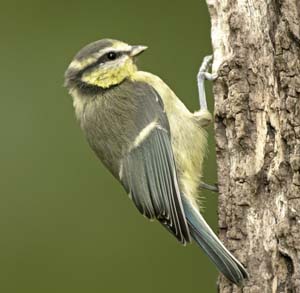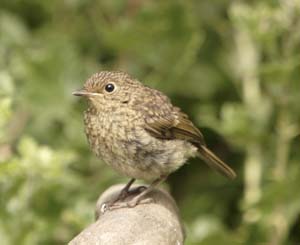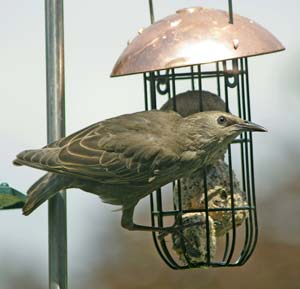Identifying young birds
Why do juvenile birds look different to their adult parents?
Juvenile birds can cause quite a lot of confusion in gardens, as many look different from their parents, but there are good reasons as to why this difference might occur.
One reason is that the juvenile plumage may provide camouflage for the young bird, both in the nest and once it has fledged. Another is that since some species use plumage colouration as a signal of social status, plumage that looks different to that of a breeding adult should reduce the levels of aggression directed towards youngsters.
Eventually, juvenile birds moult and replace their feathers with adult ones, which is done within their first year. However, the timing and extent of feather replacement will depend on the moult strategy of the species.
Moult strategy may be influenced by when the species breeds, when the youngster was born, and whether or not it is a migrant. Most common garden species, such as Bullfinch, will replace their body feathers within several weeks of fledging, but retain their wing and tail feathers for just over a year. A handful, however, undergo a complete moult and acquire adult plumage within a few weeks of leaving the nest – such as the Long-tailed Tit.
Common juvenile birds in gardens
Some common garden birds that you may come across include:
Blue Tit
Recently fledged Blue Tits have pale yellow cheeks, which in adults are white. The other head markings and general plumage colour are less strongly marked in young birds. They will undergo a post-juvenile moult within weeks of leaving the nest, replacing their body feathers and some of the wing feathers.
Robin
Young Robins initially have speckled plumage and no red breast, but as their post-juvenile moult progresses, the orange-red feathering of the breast starts to appear, as well as their pale belly.
Blackbird
Juvenile Blackbirds have warm, speckled plumage that looks very different to both female and male adults. They replace all their body feathers in post-juvenile moult, but you can pick out young male Blackbirds throughout the following year, as they retain their brown wing feathers.
Starling
Young Starlings have grey-brown plumage. Their post-juvenile moult will occur sometime between the summer and winter, gaining the dark, iridescent and spotty plumage of the adults. Often, they retain some brown juvenile feathering, especially on the head, but they will have full adult plumage by March in time for the breeding season.
What to do if you find a baby bird
If, during the spring and summer, you come across a baby bird that looks like it's been abandoned, assess the situation before 'rescuing' it. Chances are, it is still being looked after by its parents.
If you are worried that it is in immediate danger or might be at risk from predation because it is on the ground, just lift it out of the way, placing it as close to where you found it as possible. If it is a nestling, with no or few feathers, and you can see the nest, then you can place it back in.
Only contact your local wildlife rehabilitation centre if you are completely sure that is has been abandoned or orphaned - you can determine this by watching from a distance to see if the parents come back.
Buying a nest box from a reputable retailer
BTO is proud to work in partnership with leading bird-care company Vine House Farm, with the shared aim of making a positive impact for birds.
- Please visit their website for high-quality nest boxes, bird houses, foods, feeders and more.










Share this page